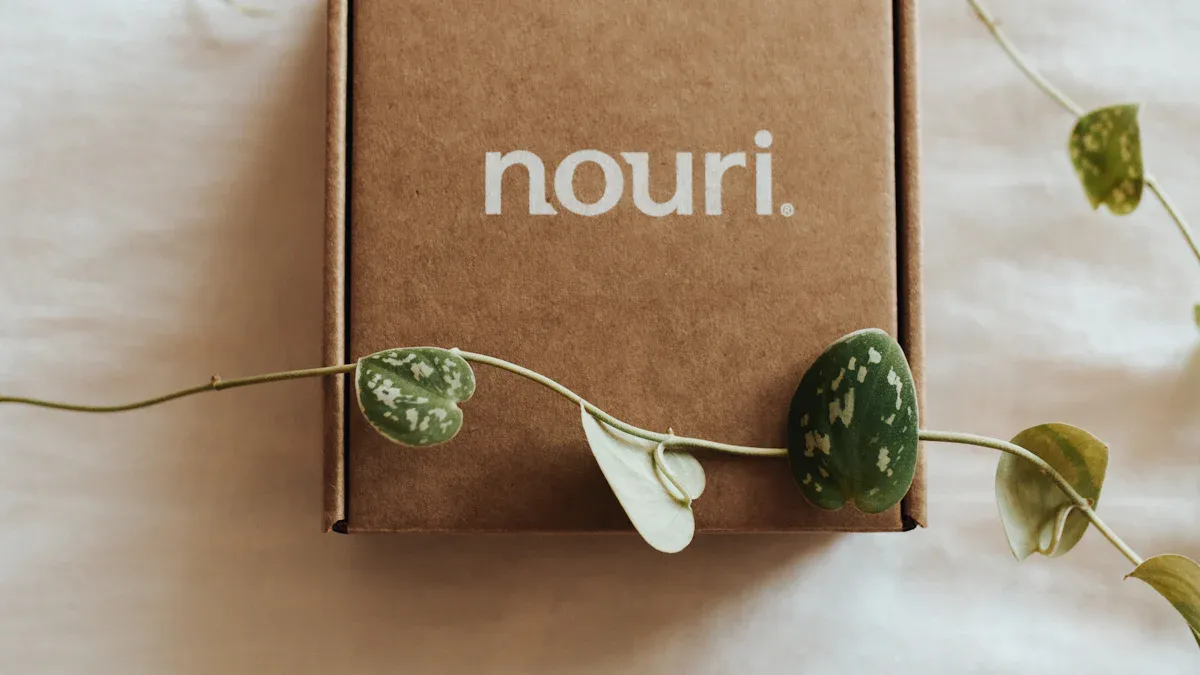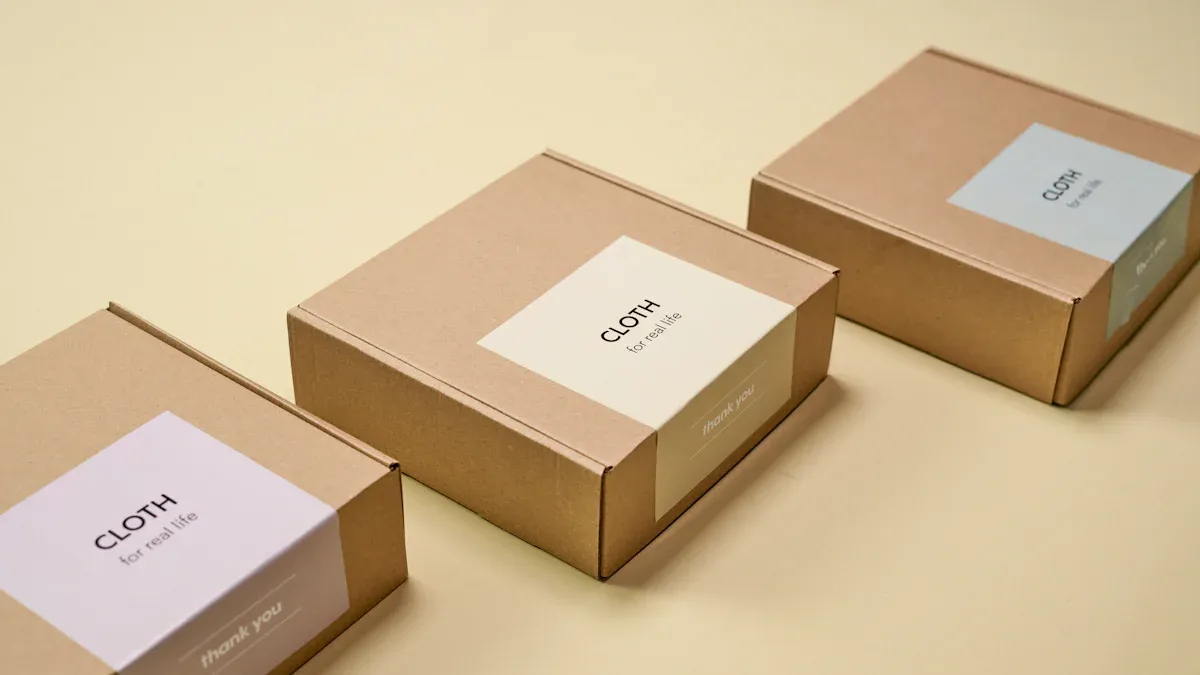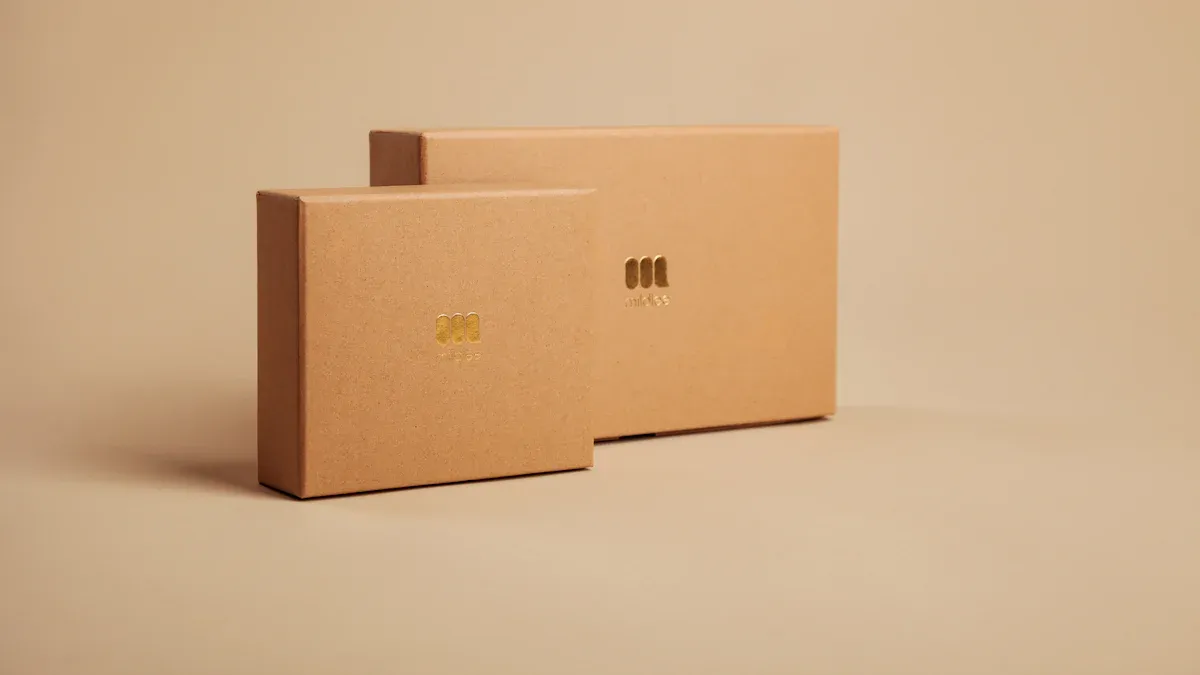
Food Packaging White Card Board has become a game-changer in the industry. This material, often referred to as Ivory Board or White Cardstock Paper, offers a sturdy yet lightweight solution. Its smooth surface makes it ideal for printing, ensuring brands can create visually appealing designs. More importantly, it meets the growing demand for Food Safe Packaging Cardboard, ensuring hygiene remains a top priority.
Why is it so popular? For one, it supports sustainability. Paperboard, including Food Packaging White Card Board, makes up 31.8% of global packaging material value. The rising demand for packaged food drives this growth, as businesses seek eco-friendly alternatives.
The global White Kraft Paper market is expected to grow from $5.8 billion in 2023 to $9.4 billion by 2032, with a 5.6% annual growth rate.
This rapid growth highlights the role of White Cardstock Paper in shaping sustainable and innovative packaging solutions.
Food Packaging White Card Board: What Is It?
Composition and Characteristics
Food Packaging White Card Board stands out due to its unique composition and properties. Manufacturers use a bleaching treatment to enhance its whiteness, making it visually appealing and suitable for branding. It often serves as the inner layer of food cartons, ensuring direct contact with food remains safe. To improve its heat sealability, the cardboard is coated with wax or laminated with a thin layer of polyethylene, making it ideal for packaging hot or moist food items.
Here’s a closer look at its defining characteristics:
| Characteristic | Detail |
|---|---|
| Bleaching treatment | Improves the whiteness of the cardboard. |
| Usage | Mainly used as the inner layer of food cartons. |
| Heat sealability | Achieved by coating with wax or laminating with a thin layer of polyethylene. |
Material science studies further validate its reliability. For instance, a 2020 analysis showed negligible chemical migration under microwave conditions, ensuring food safety. Another study in 2019 confirmed its structural integrity up to 150°C, making it suitable for various food applications. These findings highlight its durability and safety, even under demanding conditions.
Why It’s Used in Food Packaging
White cardboard has become a preferred choice for food packaging due to its versatility and eco-friendly nature. It protects food while minimizing environmental impact, making it a sustainable alternative to plastics and Styrofoam. Rising consumer awareness has pushed companies to adopt materials like Food Packaging White Card Board, which is biodegradable and recyclable.
Compared to traditional materials, high-barrier white cardboard offers superior performance. When coated with polyvinylidene chloride (PVDC), it reduces water vapor permeability by 73.8% and oxygen permeability by 61.9%. This improvement extends the shelf life of perishable items, such as fruits, by reducing weight loss and decay rates. Its lightweight design also lowers transportation costs and carbon emissions, making it a practical choice for businesses.
Additionally, white cardboard enhances branding opportunities. Its smooth surface allows for high-quality printing, helping companies create eye-catching designs that boost product visibility. Whether used for bakery boxes, takeout containers, or frozen food packaging, its flexibility makes it suitable for a wide range of applications.
White cardboard isn’t just packaging; it’s a solution that balances sustainability, safety, and practicality.
Applications of Food Packaging White Card Board

Bakery Boxes and Pastry Packaging
White cardboard has revolutionized bakery packaging. It offers a lightweight yet sturdy solution for transporting delicate pastries and cakes. Businesses love its flexibility, as it can be customized into various shapes and sizes to fit their needs. The smooth surface allows for vibrant prints, making branding easier and more appealing.
Here’s how bakery boxes made from Food Packaging White Card Board stand out:
- Eco-Friendly Options: Many bakery boxes use biodegradable materials, aligning with sustainability goals.
- Visibility: Windowed designs let customers see the product while keeping it fresh.
- Lightweight and Flexible: The material supports intricate designs and high-quality prints.
| Aspect | Description |
|---|---|
| Sustainability | Innovative packaging that helps reduce plastic and supports sustainability goals. |
| Material Composition | Recyclable paperboard made from renewable materials supports a circular economy. |
| Customization | Options for various shapes, sizes, and custom branding enhance product visibility and appeal. |
White cardboard bakery boxes don’t just protect food; they elevate the customer experience.
Takeout Containers and Meal Boxes
Takeout containers made from white cardboard are a staple in the food delivery industry. They’re especially popular for Chinese food delivery in the U.S., where their design has become iconic. These containers are biodegradable, making them a better choice than Styrofoam. Their foldable design allows for easy storage and even doubles as makeshift plates, adding convenience for users.
Food Packaging White Card Board ensures these containers are durable enough to hold hot and moist meals without compromising food safety. Restaurants also benefit from the branding opportunities offered by the material’s printable surface. Whether it’s a logo or a creative design, white cardboard helps businesses stand out.
Frozen Food and Refrigerated Packaging
Frozen food packaging demands durability and moisture resistance, and white cardboard delivers on both fronts. Manufacturers often coat it with eco-friendly barriers to prevent freezer burn and maintain food quality. Its lightweight design reduces transportation costs, making it a practical choice for businesses shipping frozen goods.
Food Packaging White Card Board also supports branding for frozen products. Its smooth surface ensures high-quality printing, helping companies create eye-catching designs that attract customers in grocery aisles. From frozen pizzas to ice cream cartons, this material adapts to various needs while maintaining sustainability.
Benefits of Food Packaging White Card Board
Sustainability and Recyclability
White cardboard has become a cornerstone of sustainable food packaging. Its recyclability makes it an eco-friendly alternative to traditional materials like plastic. Companies increasingly turn to recycled content to reduce waste and optimize their manufacturing processes. This shift aligns with global efforts to create a circular economy, where materials like white cardboard can be reused instead of discarded.
Here’s a closer look at how white cardboard supports sustainability:
| Evidence Description | Implication for White Cardboard in Food Packaging |
|---|---|
| Companies are increasingly turning to recycled content to reduce waste and optimize manufacturing processes. | This supports the idea that white cardboard, being recyclable, can help companies reduce waste and improve sustainability. |
| The adoption of post-consumer recycled (PCR) materials contributes to a circular economy. | White cardboard can be part of this circular economy, as it can be recycled and reused, reducing reliance on virgin materials. |
| Using packaging made from PCR content diverts waste from landfills. | White cardboard’s recyclability means it can help divert waste from landfills, aligning with sustainable packaging goals. |
| Traditional plastic packaging relies heavily on fossil fuels, contributing to carbon emissions. | Transitioning to white cardboard can reduce carbon footprint compared to plastic packaging, supporting environmental sustainability. |
| Adopting renewable, biodegradable, or compostable options helps reduce environmental impact. | White cardboard, being recyclable, aligns with the goal of minimizing environmental impact in food packaging. |
Switching to white cardboard also reduces reliance on fossil fuels, which are a major contributor to carbon emissions. Its biodegradable nature ensures that even if it ends up in the environment, it breaks down more easily than plastic. This makes it a win-win for businesses and the planet.
Food Safety and Hygiene
When it comes to food packaging, safety is non-negotiable. Food Packaging White Card Board excels in this area by offering a clean and hygienic solution. Its smooth surface minimizes the risk of contamination, ensuring food stays safe from harmful substances. Manufacturers often treat the material to meet strict food safety standards, making it suitable for direct contact with edible items.
The material’s ability to withstand high temperatures adds another layer of safety. Whether used for hot takeout meals or frozen goods, white cardboard maintains its structural integrity without releasing harmful chemicals. This reliability makes it a trusted choice for businesses looking to prioritize consumer health.
Moreover, white cardboard’s moisture-resistant coatings prevent leaks and spills, keeping food fresh and intact. This feature is especially important for items like soups, sauces, and other liquid-based foods. By combining hygiene with practicality, white cardboard ensures a superior packaging experience.
Customization and Branding Opportunities
In today’s competitive market, packaging does more than just protect food—it tells a story. Food Packaging White Card Board offers endless possibilities for customization, helping brands stand out on crowded shelves. Its smooth, white surface provides the perfect canvas for vibrant prints, logos, and designs.
Businesses can use this material to create unique packaging that reflects their brand identity. Whether it’s a minimalist design for a premium product or a colorful layout for a family-friendly item, white cardboard adapts to any vision. Custom shapes and sizes further enhance its versatility, allowing companies to tailor their packaging to specific needs.
Did you know? Studies show that 72% of consumers say packaging design influences their purchasing decisions.
White cardboard also supports eco-conscious branding. Companies can highlight the material’s sustainability on their packaging, appealing to environmentally aware customers. This dual focus on aesthetics and ethics makes white cardboard a powerful tool for building brand loyalty.
Innovations in Food Packaging White Card Board for 2025

Eco-Friendly Coatings and Barrier Technologies
The future of food packaging lies in eco-friendly coatings that enhance functionality without harming the environment. These coatings make white cardboard more versatile while keeping it sustainable. For instance:
- PHA-based coatings replace petroleum-based materials and are compostable, even in marine environments.
- Oil and grease-resistant coatings offer a sustainable alternative to PFAS, ensuring recyclability and repulpability.
- Water-repellent coatings provide excellent moisture resistance, making them perfect for food packaging.
- Biowax-based coatings, derived from vegetable oils, are free from harmful compounds and compatible with existing machinery.
- Cupstock coatings replace traditional polyethylene films, maintaining both performance and aesthetics.
These innovations ensure that white cardboard remains a top choice for businesses aiming to balance sustainability with practicality.
Smart Packaging Features
Smart packaging is revolutionizing how food products are stored and monitored. It combines technology with functionality to improve safety and transparency. Some exciting features include:
- Anti-counterfeiting technologies, like spectroscopy and blockchain, combat food fraud. Devices such as ‘Spectra’ analyze food products to detect adulteration.
- Active packaging controls moisture, releases antimicrobial agents, or absorbs oxygen to extend shelf life.
- Intelligent packaging uses sensors or indicators to communicate spoilage or temperature changes.
- QR codes and NFC technology allow consumers to access detailed product information, from nutritional facts to the farm-to-table journey.
These advancements not only protect food but also build trust between brands and consumers.
Lightweight and Durable Designs
In 2025, white cardboard packaging is lighter yet stronger than ever. Manufacturers are focusing on reducing material weight without compromising durability. This approach lowers transportation costs and carbon emissions, making it an eco-friendly option for businesses.
Lightweight designs also improve usability. Consumers find these packages easier to handle, while businesses benefit from reduced shipping expenses. Despite being lighter, the material remains robust enough to protect food during transit. This balance of strength and efficiency ensures that white cardboard continues to lead the way in sustainable packaging solutions.
White cardboard has redefined food packaging in 2025. Its eco-friendly nature meets consumer demand for sustainable options. Businesses benefit from its cost-effectiveness and branding potential.
- Governments and retailers are phasing out plastics, boosting its adoption.
- Innovations enhance food safety and preservation, making it a practical, future-ready solution.
White cardboard leads the way toward a greener tomorrow.
FAQ
What makes white cardboard eco-friendly?
White cardboard is recyclable and biodegradable. It reduces waste and supports a circular economy, making it a sustainable alternative to plastic packaging.
Can white cardboard handle hot or moist food?
Yes, manufacturers coat it with wax or polyethylene. These treatments improve heat sealability and moisture resistance, ensuring food safety and durability.
How does white cardboard improve branding?
Its smooth surface allows vibrant printing. Businesses can customize designs, logos, and shapes to create eye-catching packaging that reflects their brand identity.
Post time: May-29-2025
